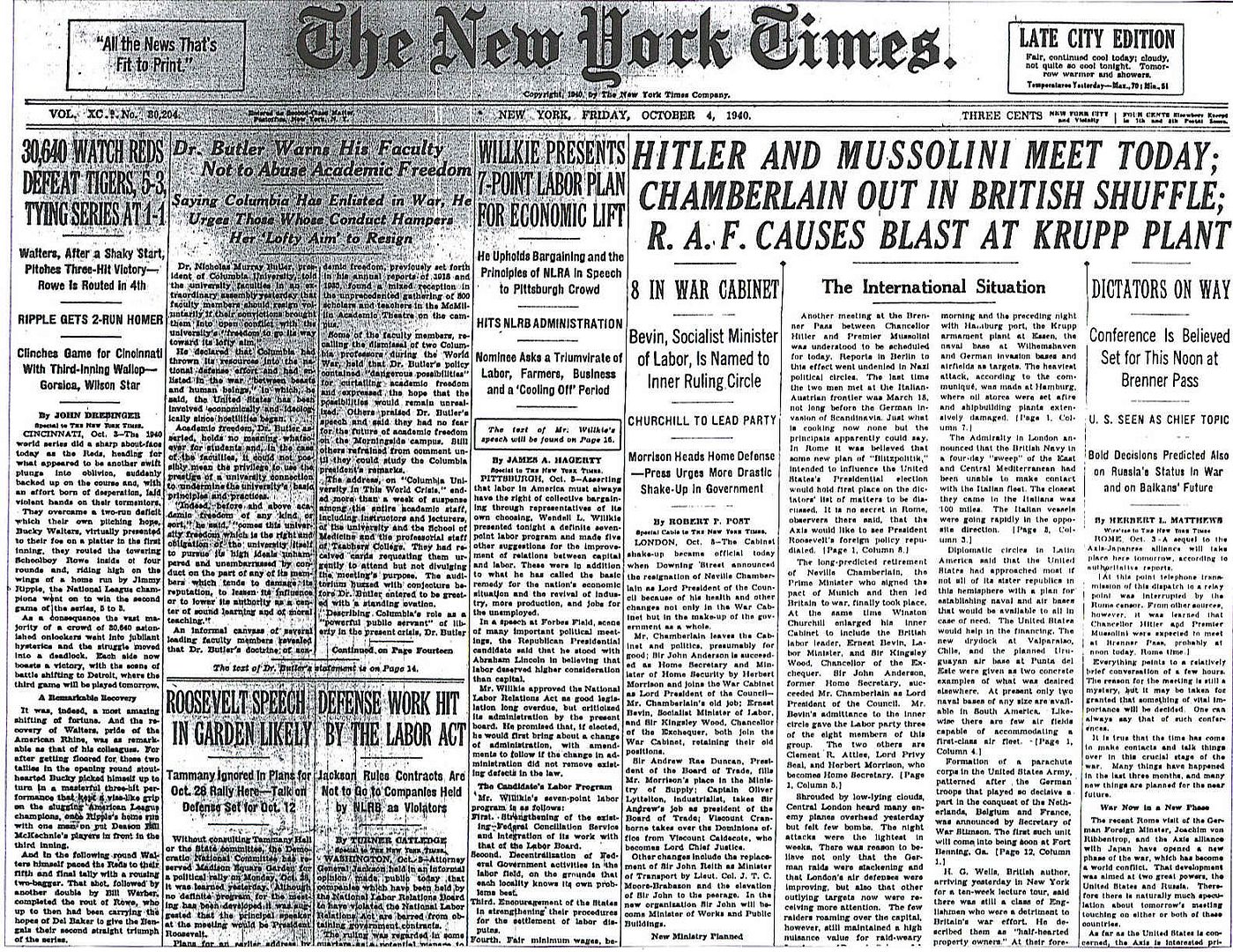
Posted on 10/04/2010 5:14:18 AM PDT by Homer_J_Simpson

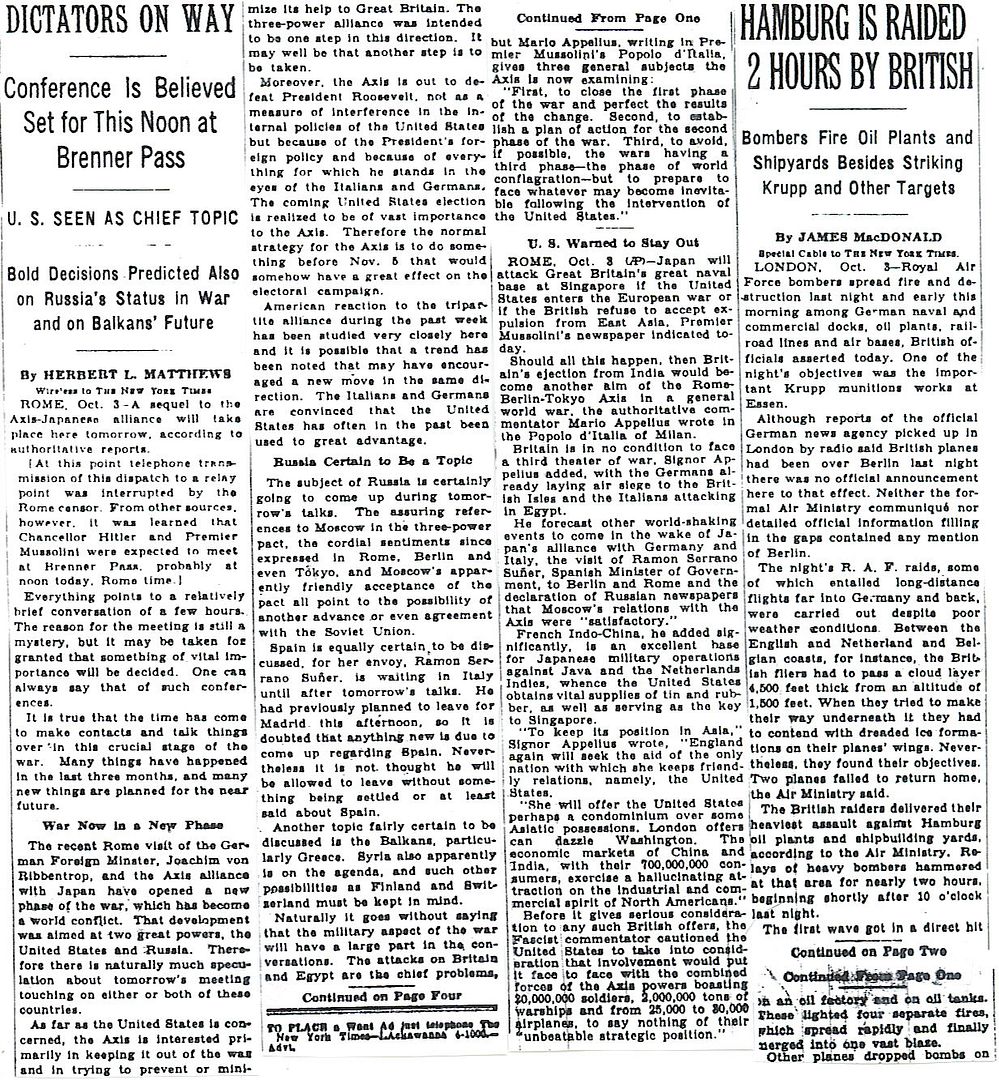
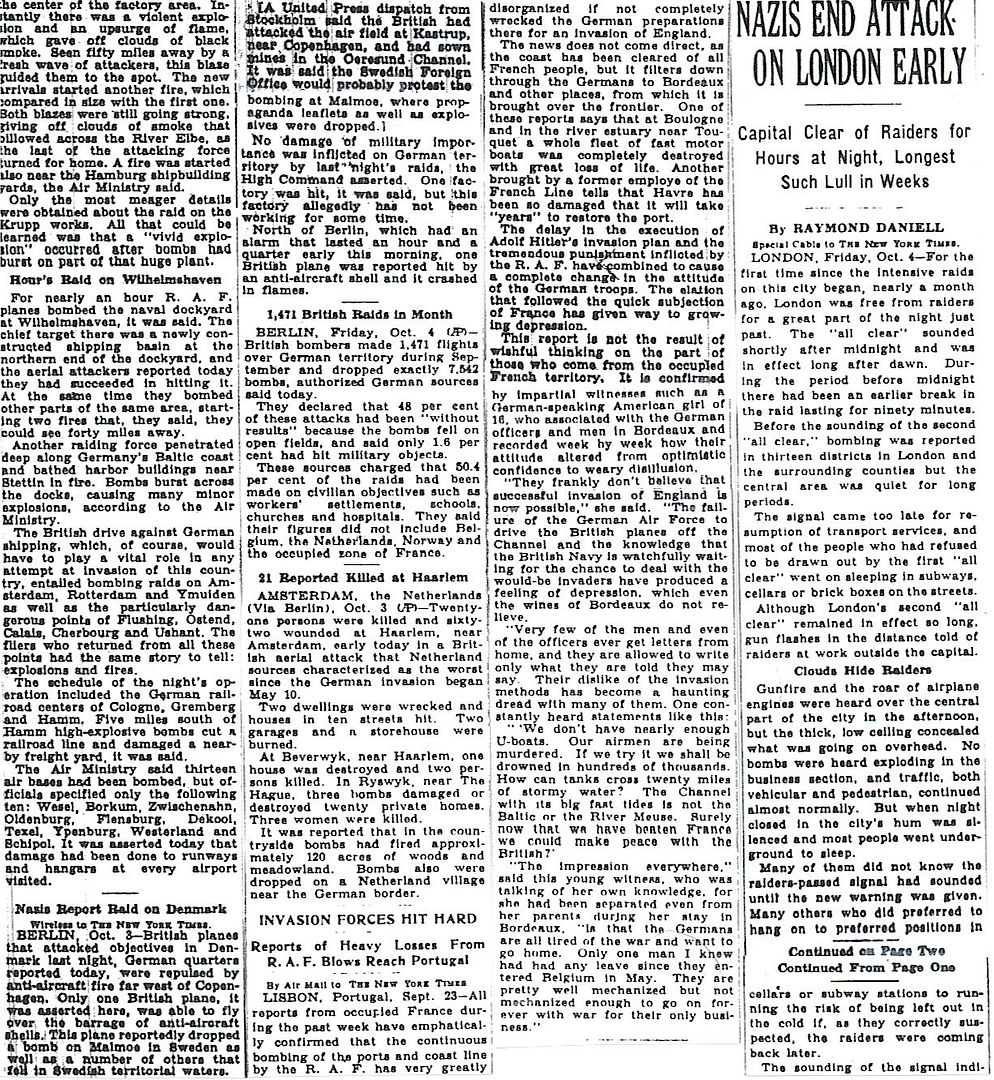
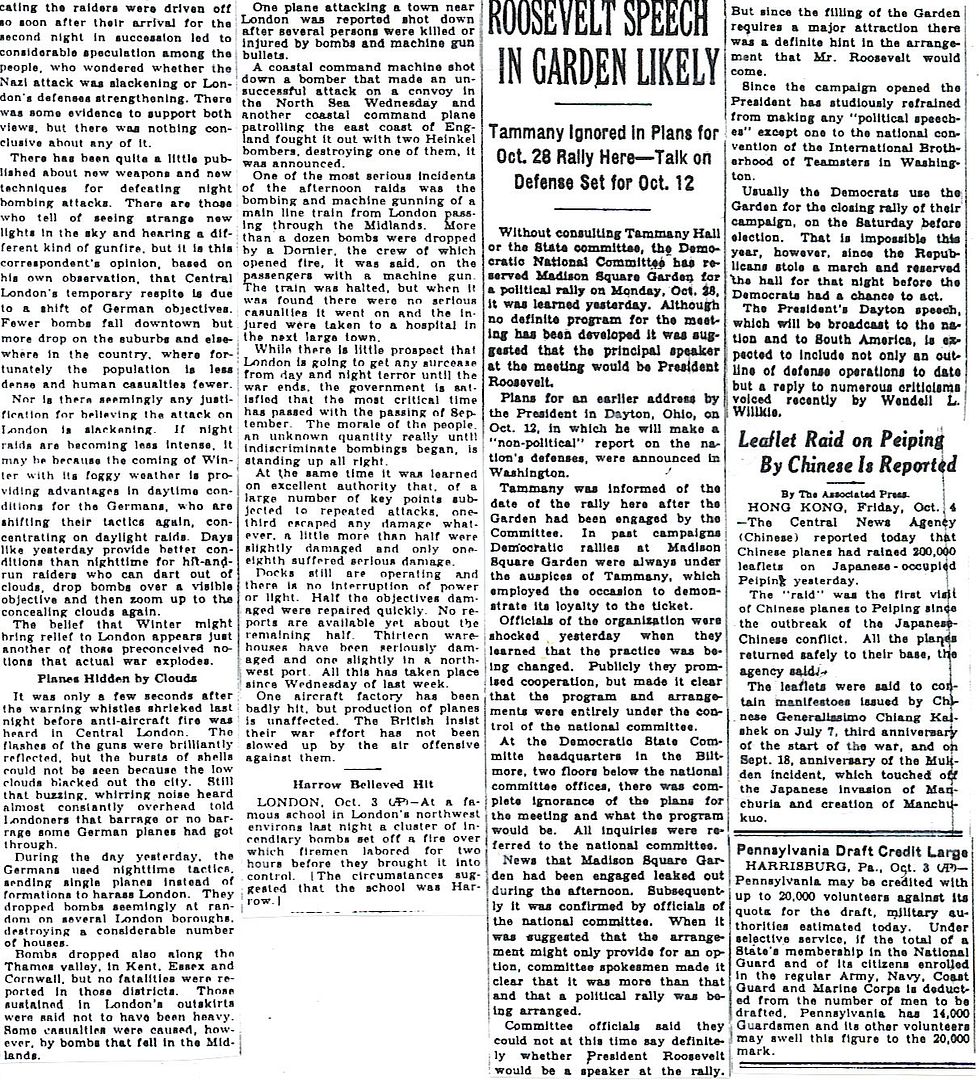
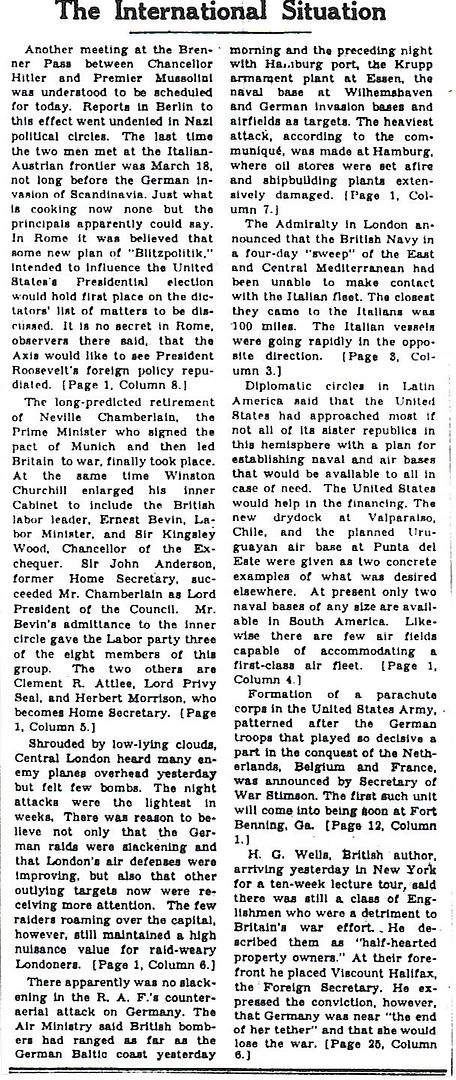
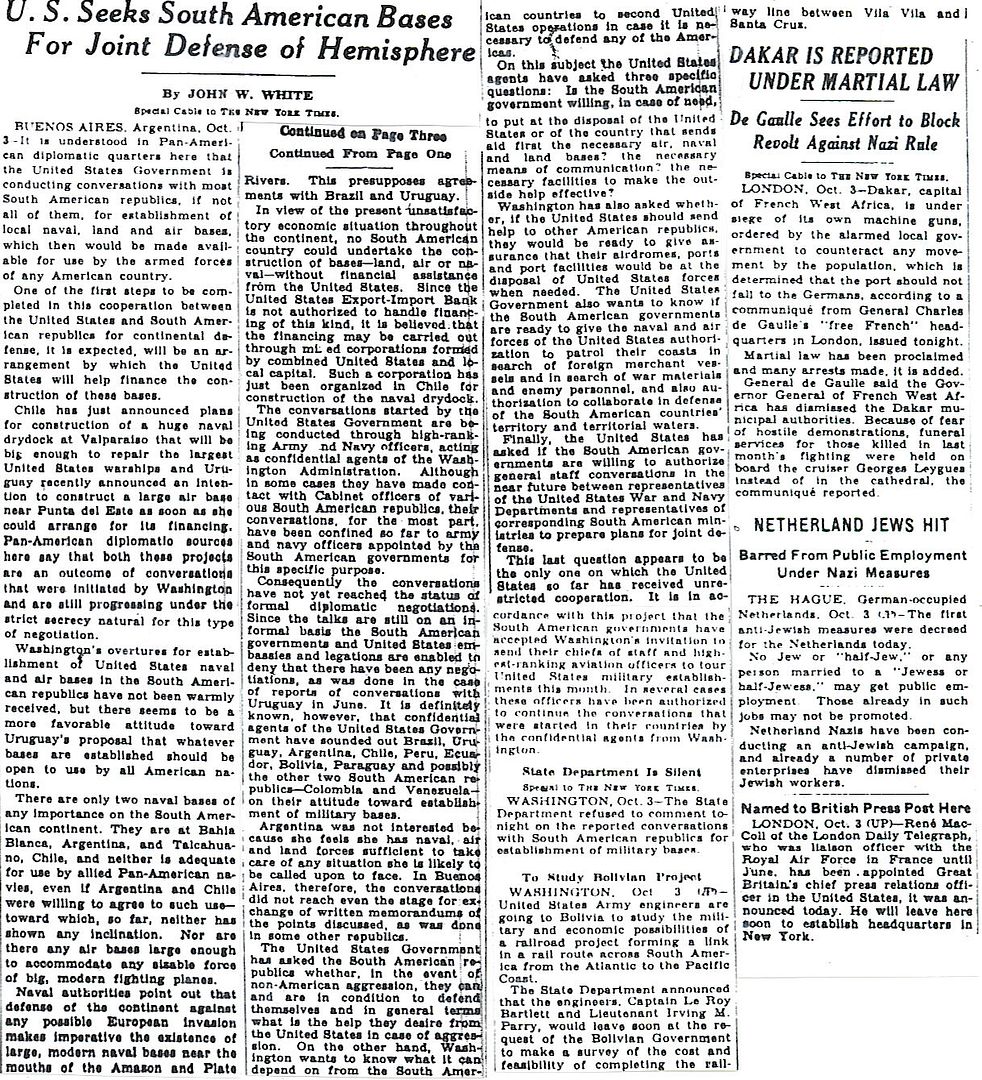
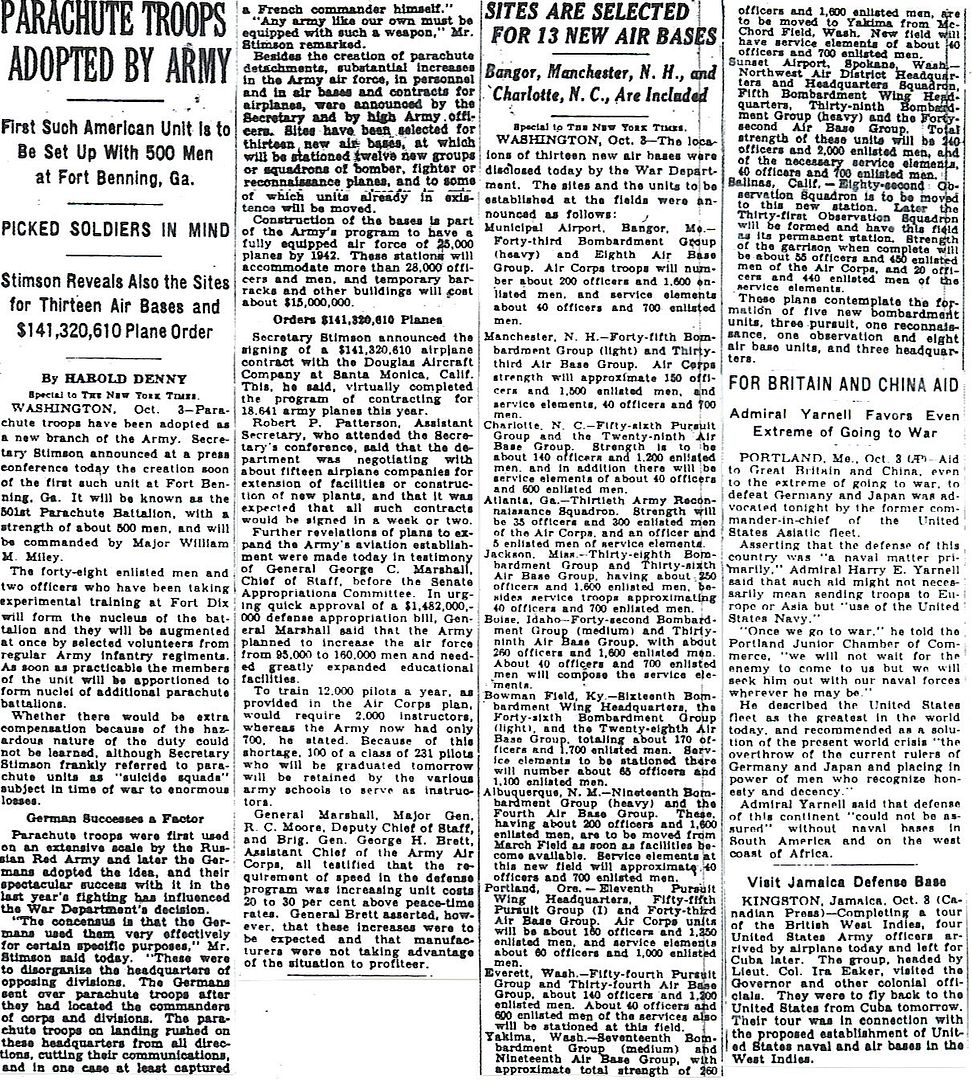
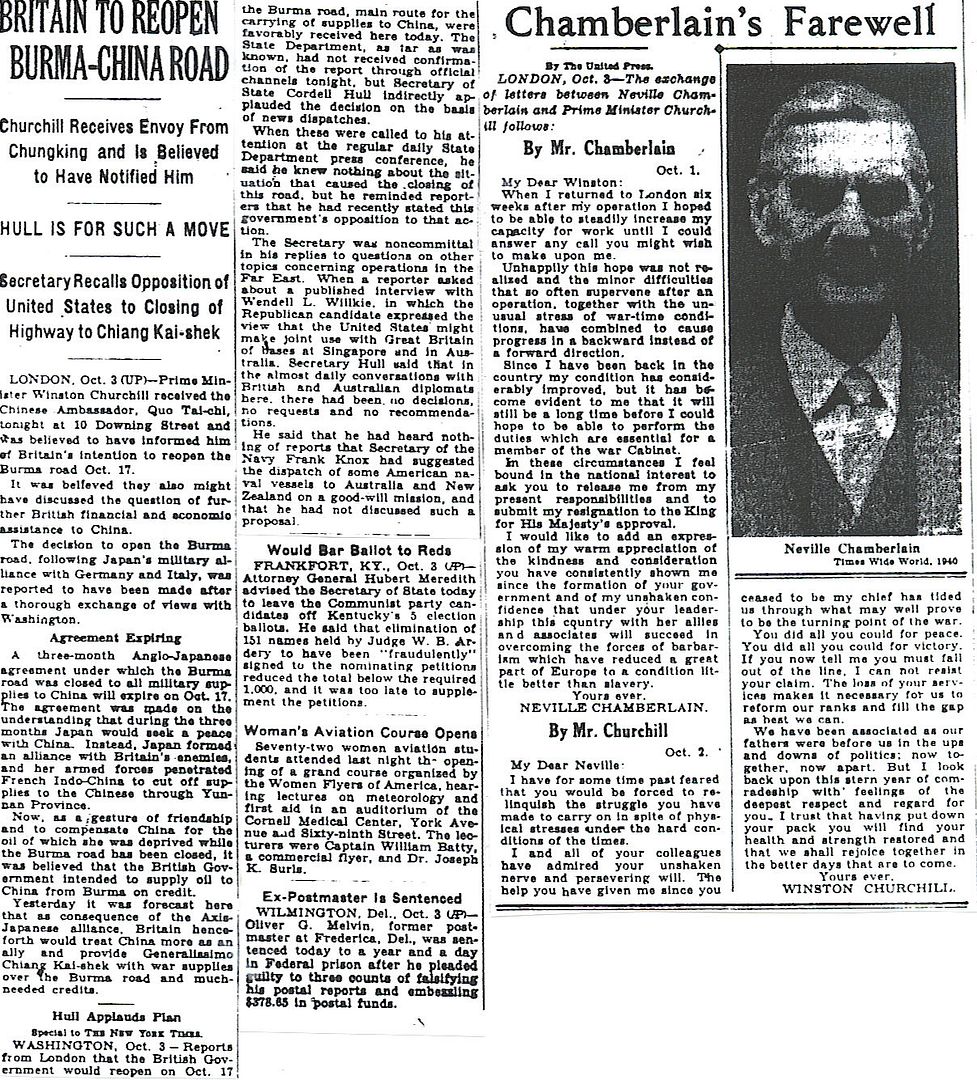
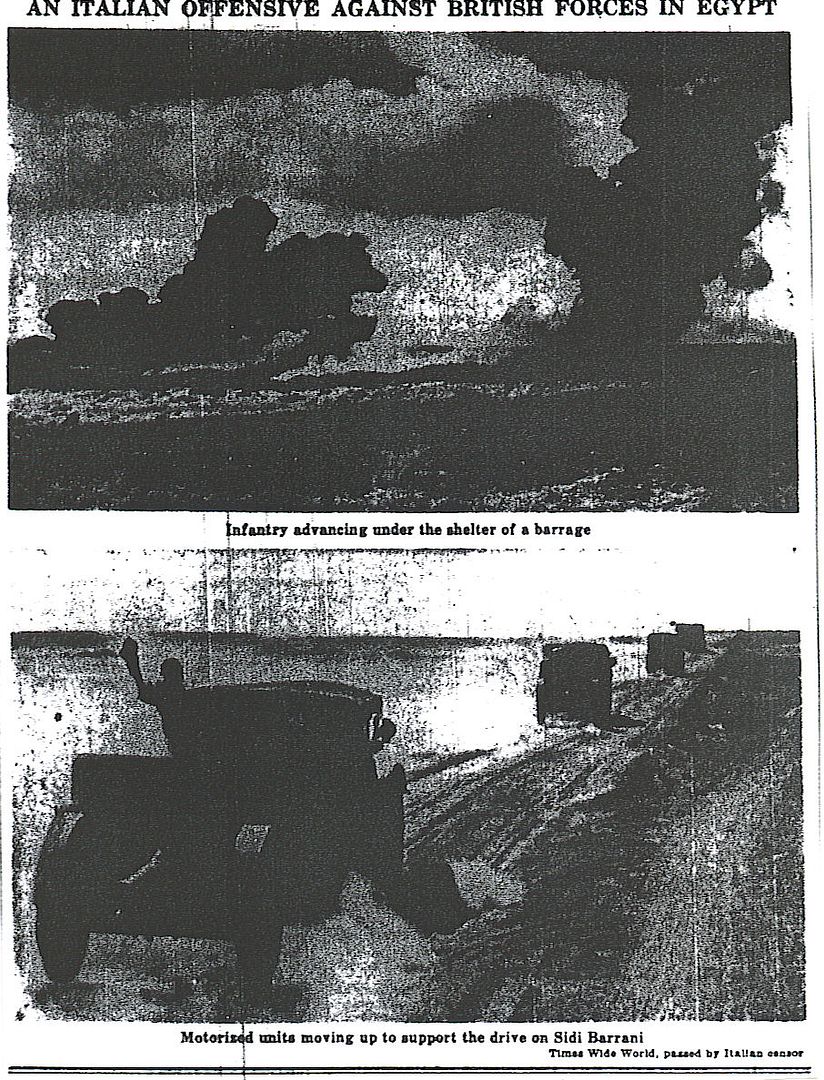
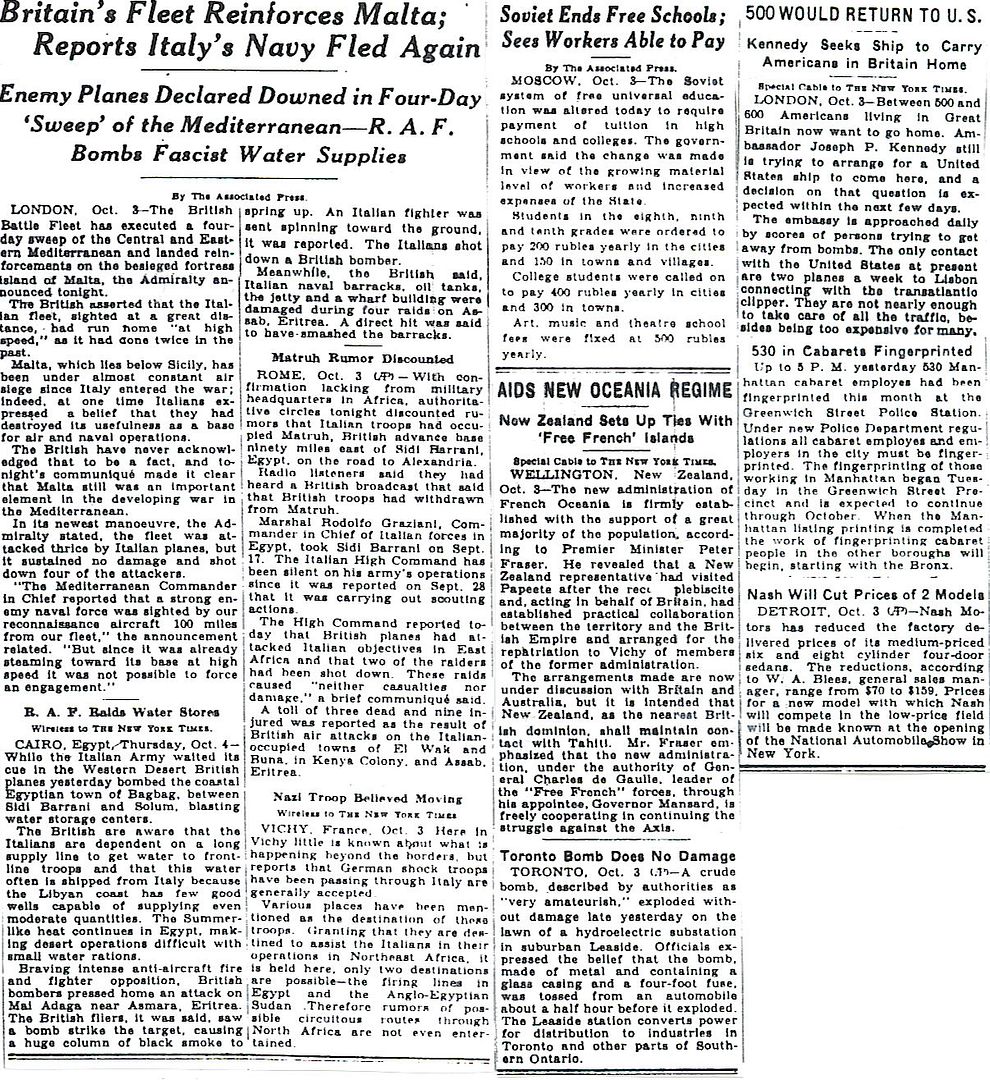
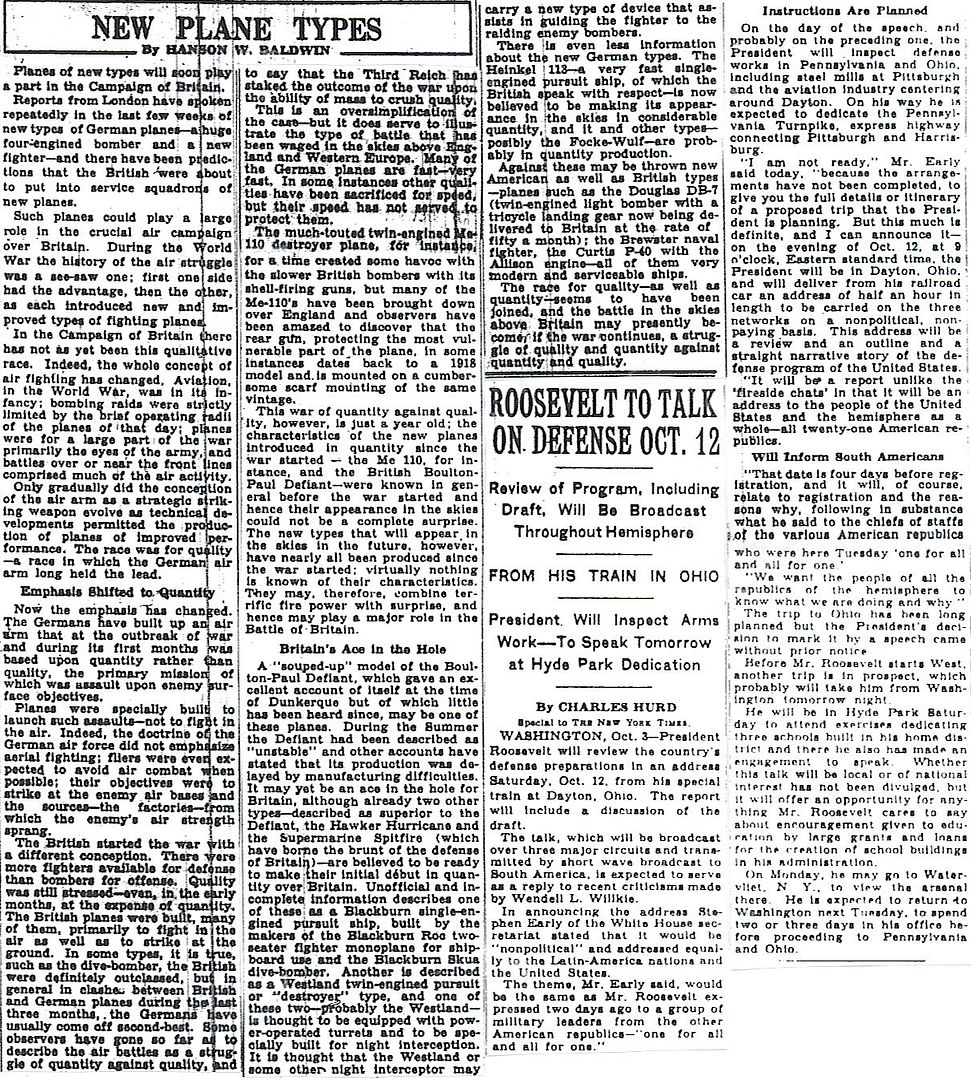
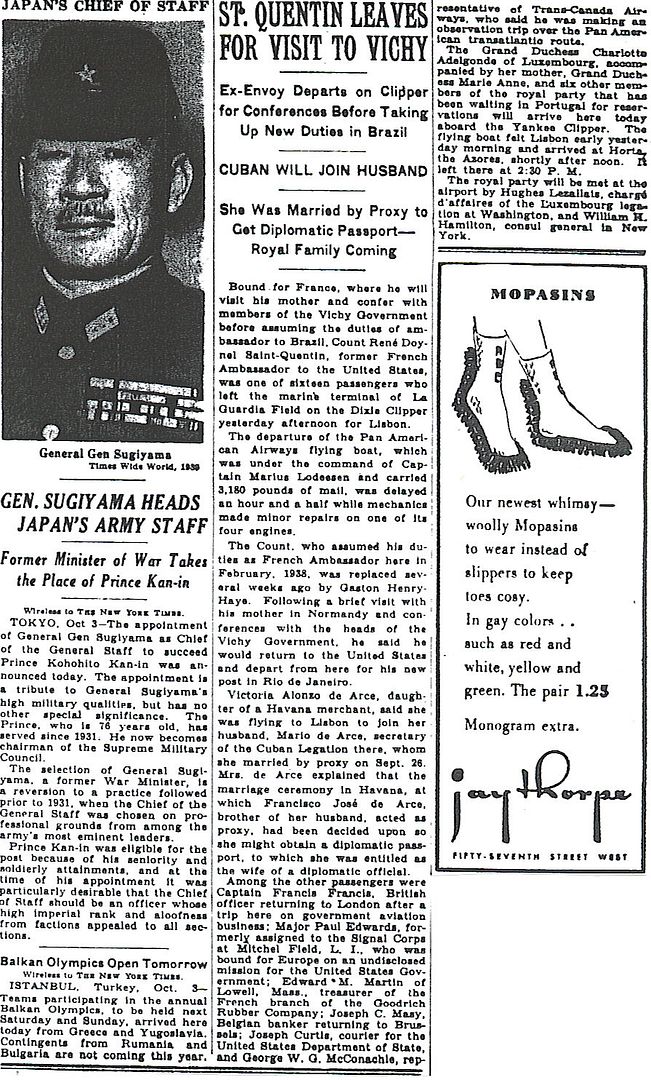
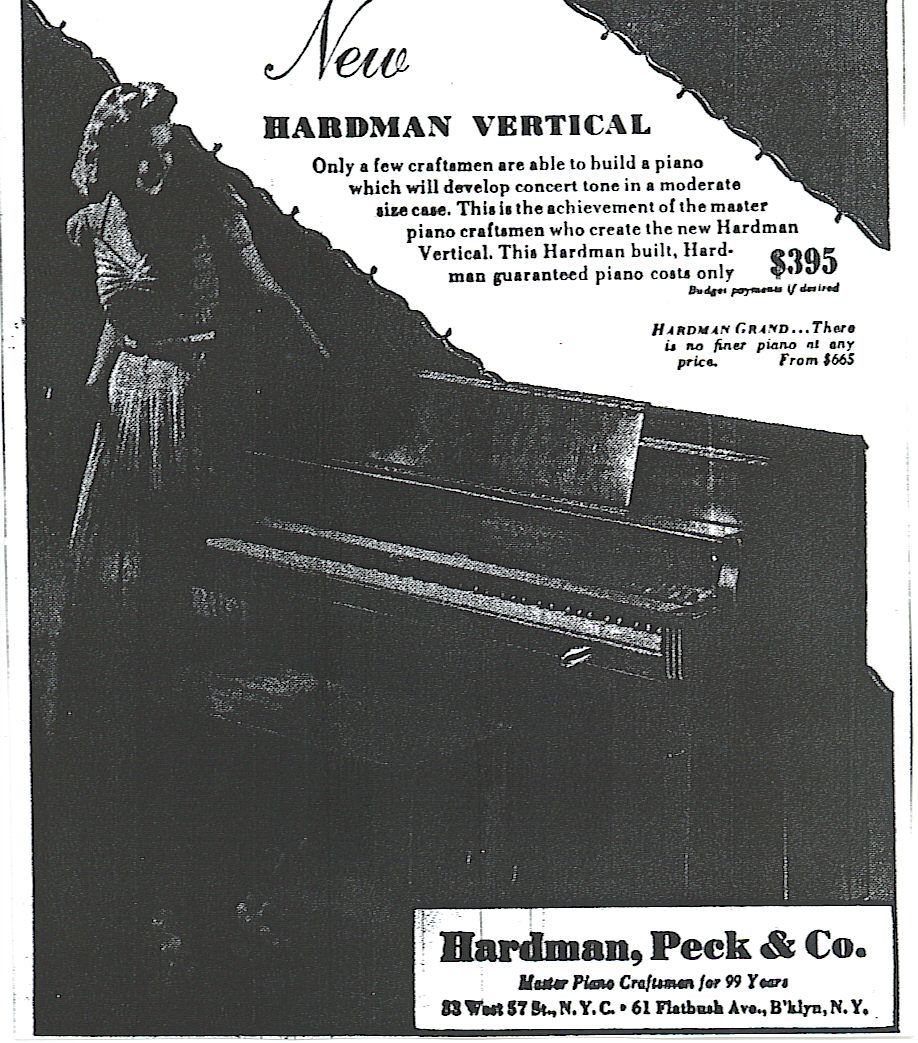
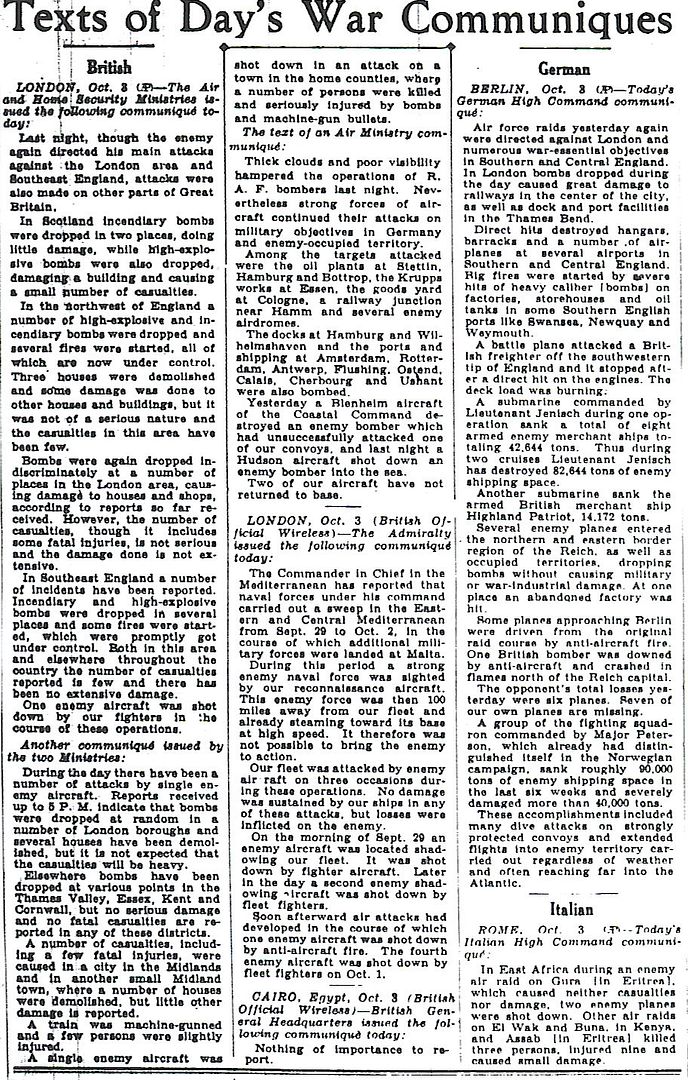
Plus a special guest map from Michael Korda’s, “With Wings Like Eagles,” showing the air defenses of England and Wales, August 1940.
http://www.onwar.com/chrono/1940/oct40/f04oct40.htm
Hitler and Mussolini meet
Friday, October 4, 1940 www.onwar.com
In Italy... Hitler and Mussolini meet at the Brenner Pass. Hitler warns Mussolini against undertaking new campaigns and offers help in Africa, which Mussolini declines.
British Command... Sir Charles Portal is chosen to be the new Chief of the Air Staff. The former chief, Sir Cyril Newall, is appointed Governor General of New Zealand.
http://homepage.ntlworld.com/andrew.etherington/month/thismonth/04.htm
October 4th, 1940
UNITED KINGDOM:
Battle of Britain:
Park issues new observations and instructions to sector controllers and to squadron commanders, whose pilots are becoming fretful at the frequency with which they are still at an unfavourable height when they meet the enemy. Park assured them:
“I wish the squadron commanders and sector controllers to know everything humanly possible is being done by group to increase the warning received of incoming raids. ... With the prevailing cloudy skies and inaccurate heights given by the RDF the group controllers’ most difficult problem is to know the height of the incoming raids.”
Park then detailed what steps were being taken to correct this situation, including the formation of a special reconnaissance flight at Gravesend.
“Whatever time permits I wish you to get the readiness squadrons in company over sector aerodromes. Spitfires 25,000 feet, Hurricanes 20,000 feet, and wait until they report they are in good position before sending them to patrol lines or to intercept raids having a good track in fairly clear weather.
Losses: Luftwaffe, 12; RAF, 3.
Sir Charles F.A. Portal, KCB, DSO, MC is chosen to be Chief of the Air Staff, with effect from 24 October, to replace Sir Cyril Newall, who has been appointed Governor of New Zealand. Air Marshal Sir Richard Peirse is named Portal’s successor as C-in-C Bomber Command.
London: Churchill asks Roosevelt to send US ships to help defend Singapore, a British colony.
ITALY:
Brenner Pass: “The War is won,” Hitler told Mussolini today when the two met for three-hours in an armoured train - a gift from the Fuhrer to the Duce. The British people were under an “inhuman strain” and, Hitler claimed, it was only a matter of time before they cracked.
In Berlin, foreign office spokesmen told neutral journalists that the principal subject discussed by the two leaders and their foreign ministers was an appeal to the British to call off the war. However, the Italians were quick to note that Hitler no longer talks about invading Britain.
Count Ciano, notes in his diary, that this obvious setback for their Axis partner put Mussolini in an exceptionally good mood. “Rarely have I seen the Duce in such good humour.”
In Rome, Il Popolo di Roma (newspaper) commenting on the talks, speaks of a long war in prospect, with Germany unable to invade Britain this year.
CANADA: Corvettes HMCS Summerside and Louisburg laid down Quebec City, Province of Quebec.
Patrol vessel HMCS Otter commissioned. (Dave Shirlaw)
U.S.A.: Baseball!
The motion picture “Knute Rockne-All American” premieres in South Bend, Indiana. Directed by Lloyd Bacon, this American football biography stars Pat O’Brien as Knute Rockne, Ronald Reagan as George Gipp and Donald Crisp. The premiere is attended by O’Brien and Reagan. (Jack McKillop)
http://worldwar2daybyday.blogspot.com/
Day 400 October 4, 1940
Battle of Britain Day 87. Rain and mist again cause poor visibility over Southern England and Luftwaffe sends a steady stream of reconnaissance flights and single bomber raids with peak intensity around 3 PM. Bombs are dropped in Kent and near London hitting mainly homes, farms and few factories. 2 Ju88 bombers are shot down for the loss of 3 RAF fighters (1 pilot killed). There is widespread bombing on a small scale overnight but London is heavily bombed between 7 and 9 PM.
Operation Lucid. Fire ships (tankers War Nizam & War African filled with 50% heavy fuel oil, 25% diesel oil and 25% petrol) depart Sheerness and Harwich escorted by 11 destroyers, 6 minesweepers and torpedo boats. However, rough seas force the operation to be cancelled.
General Charles de Gaulle arrives in Douala, French Cameroon (which is sympathetic to the Free French) on board British cruiser HMS Devonshire, to organize the invasion of neighbouring Gabon (loyal to Vichy France). After the failed invasion of French West Africa at Dakar, de Gaulle is keen rally support for the Free French cause in Equatorial Africa, to mount operations from Chad into Italian-held Libya and to deny Germany use of the Atlantic coast for basing submarines and surface raiders to disrupt Allied shipping around Africa.
British submarine HMS Rainbow collides with Italian steamer Antonietta Costa and sinks in the Adriatic Sea, 20 miles North of Brindisi, Southern Italy (all 55 hands lost). Submarine HMS Triton shells shore installations at Vado Ligure and Savona, near Genoa, Northern Italy. Triton also sinks Italian steamer Franca Fassio 20 miles to Southwest of Savona, in the Ligurian Sea. Submarine HMS Tetrarch attacks another Italian merchant ship nearby, without success.
Date: 4th October 1940 
Enemy action by day
Throughout the day activity was confined to raids by single aircraft or very small formations, the area concerned being the South East of England and London, and the time of principal concentration about 1500 hours. A few reconnaissances were made elsewhere.
During operations our fighters destroyed two enemy aircraft (plus three probable and four damaged). Our losses were three aircraft, and one pilot missing.
East Coast
Reconnaissances of shipping were reported: during one of these an interception was made with inconclusive results, the enemy escaping into cloud.
South East Coast
Inland and coastal flights and a few reconnaissance of convoys were made from 0600 to 1100 hours.
At about 0830 hours an Air Ministry Establishment at Fairlight was attacked.
At 1100 hours numerous single aircraft started crossing the Coast between Beachy Head and Dover, flying towards London. The activity gradually increased until about 1500 when it reached its peak, after which it decreased until 1645 hours, when a fresh stream started coming in. The majority of these flew only as far as Biggin Hill and
Kenley but some penetrated the Inner Artillery Zone. This activity ceased at 1730 hours. A few sporadic raids occurred until dusk.
Bombing was fairly extensive in Outer London, Kent, Surrey and Suffolk.
At 1725 hours all fighter Squadrons in 11 Group were grounded on account of weather.
South and West Coast
Between 1000 and 1100 hours two raids entered Lyme Bay; one flew to the Bristol Channel and Liverpool, and the other to the Bristol Channel, thence to Hereford and South East to Selsey.
At 1000 hours a single aircraft flew in at Selsey Bill to Farnborough where it circled for some time.
Night Operations - 4th/5th October 1940
1900 Hours to 2100 Hours
At about 1905 hours a stream of raids commenced from the Abbeville region on the most intense scale yet observed after dark. The enemy aircraft were shown as crossing the Channel in lines ahead spaced at 3 to 5 mile internals. A few raids also came from Baie de Seine over Shoreham. The stream from Abbeville was maintained and it is estimated that over 100 raids passed over the route in the two hours to 2100 hours, while at the same time the stream from Baie de Seine narrowed and became more active, with 20 or more raids passing during the hour 2000 to 2100. The target of all the above raids was London.
One raid also visited Bristol and two or three were apparently minelaying in the Thames Estuary. One raid also visited Liverpool.
2100 Hours to 2300 Hours
34 raids were plotted in between Beachy Head and Dungeness to London, but only eight pierced the central zone, the remainder spreading to South West and North West London and up to North Weald and Debden.
A further 24 raids followed to the same area, but spreading further and covering the whole of the South East, and as far West as Swindon.
Minelaying was suspected between Orfordness and Lowestoft.
Two raids from the North Dutch Coast visited Berwick and Newcastle, and Eyemouth and Dunbar.
2300 Hours to 0100 Hours
A further 12 raids from the South followed the usual route to South East England and 16 raids from the Dutch Coast flew in between Cromer and Harwich, across East Anglia, and then South over North West and West London and out at Beachy Head.
One raid entered at Solway Firth, to near Carlisle and then flew South the whole length of England and out at Weymouth.
By 0100 hours the country was clear.
At 0200 small activity recommenced and ten raids from Dieppe had flown to London by 0245 hours.
No further raids followed, and by 0330 hours the whole country was again clear.
There was no subsequent enemy activity reported during the period to 0600 hours.

________________________________________
Statistics
Fighter Command Serviceable Aircraft as at 0900 hours, 4th October 1940
Casualties:
| Enemy Losses | ||
| By Fighters | ||
| Destroyed | Probable | Damaged |
| 2 Ju88 | 3 Ju88 | |
| 1 Do17 | ||
| 2 He111 | 1 He111 | |
| 2 | 3 | 4 |
Patrols:
Balloons:
Serviceability of Aerodromes:
Organisation:
Home Security Reports
Corrigendum
With reference to yesterday's report, it is now reported that the School of Interpretation is not closed and Interpretation is quite normal.
The 501st Parachute Battalion was activated at Fort Benning, Georgia on October 1, 1940. It was the first tactical parachute unit to be activated in the United States Army. As early as July 1940, the War Department had determined that a larger unit than the Test Platoon would be required to test and develop the organization, tactics training procedure and required equipment for parachutists.Under directive of October 2, 1940, Army commanders were directed to select volunteers to man the 501st Parachute Battalion. These volunteers began arriving early in October 1940 and were housed in tents on the ground overlooking Lawson Field at Fort Benning, Georgia. The unit was organized with the Test Platoon as the nucleus.
Maj. William M. Miley, later to command the 17th Airborne Division was designated to command this first parachute unit...
...Upon arrival the men and officers began an intense physical training program. Parachute jumping and parachute packing groups were established primarily from the Test Platoon to train the incoming personnel. One March 21, 1941, Brigadier Omar N. Bradley and Major Mily presented the parachutist qualification badge to 276 men and officers. Forty-seven members of the Test Platoon and eight officers had previously received the qualification badge that was designated by Captain William P. Yarborough. This group composed the first group of qualified parachutist in the U.S. Army.
I noted an "Isolation Hospital", about two miles from anything, had the same bombing priority as the rail yards and factories.
Hmmmmm I said to myself, why would they waste a bomb on a hospital full of TB patience?
The good folks of the UK would just rush in and carry them out, should there be any survivors?
The map is based on an old UK Ordnance Survey map, with German printing and such. It does lack certain Waffen Kamp markings. It is presently at a pawnshop in Eureka MT, I'm thinking about selling it on E-bay. I'd really like to give every allied airman/soldier/sailor etc a copy as it shows the Germans were prepared and tried to do germ warfare on the civilian population.
If there are any military map specialists in the area, they are welcome to come by Gary's Pawnshop (on Hwy 93) and check it out or authenticate same.
TIA
(The best part? That air raid never happened, per the town historians. They stated they were bombed more during the First World War via Zepplins. God Bless the RAF, my mother was working in a factory there about during that time frame)
Disclaimer: Opinions posted on Free Republic are those of the individual posters and do not necessarily represent the opinion of Free Republic or its management. All materials posted herein are protected by copyright law and the exemption for fair use of copyrighted works.